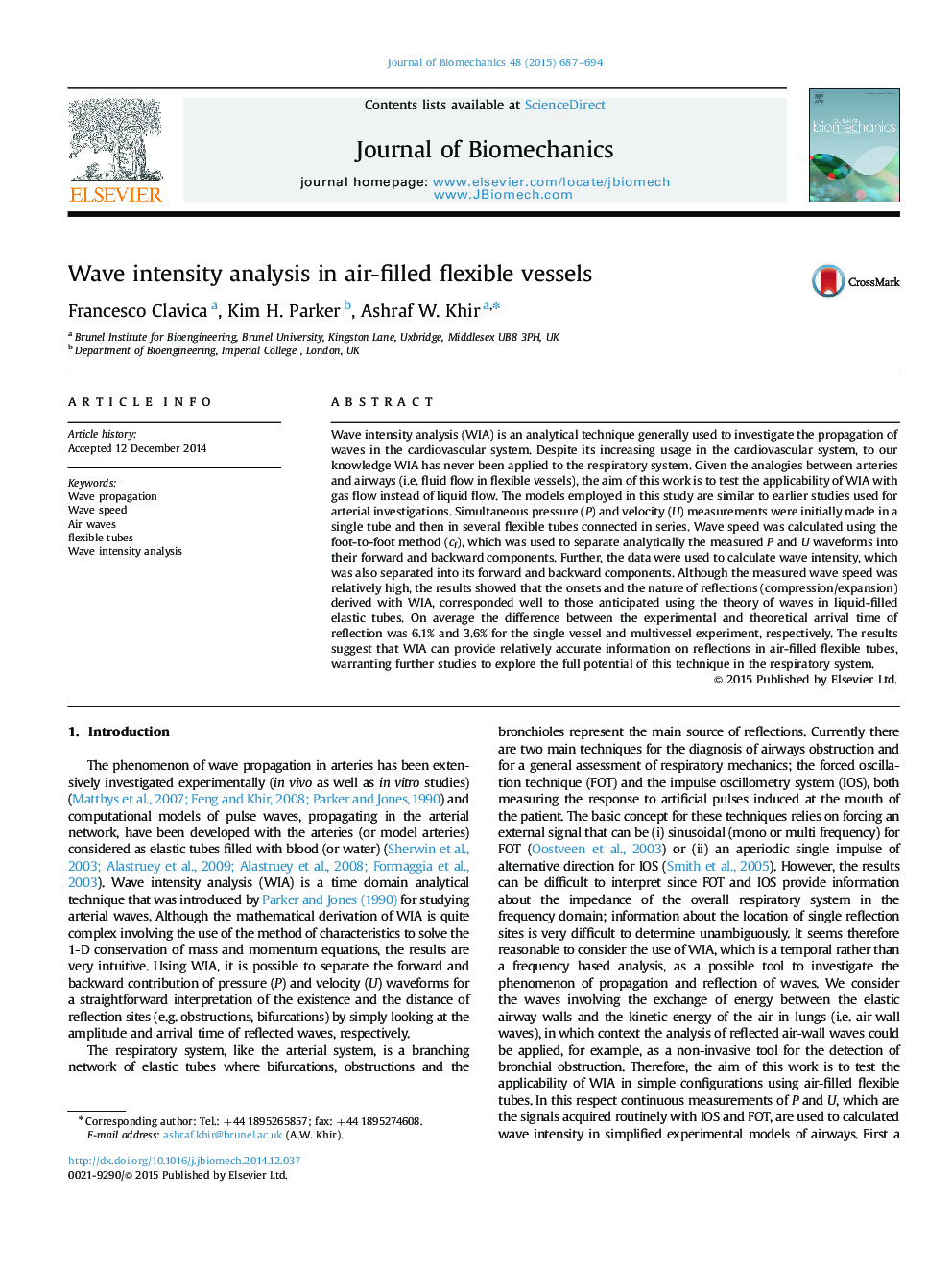| Article ID | Journal | Published Year | Pages | File Type |
|---|---|---|---|---|
| 10431735 | Journal of Biomechanics | 2015 | 8 Pages |
Abstract
Wave intensity analysis (WIA) is an analytical technique generally used to investigate the propagation of waves in the cardiovascular system. Despite its increasing usage in the cardiovascular system, to our knowledge WIA has never been applied to the respiratory system. Given the analogies between arteries and airways (i.e. fluid flow in flexible vessels), the aim of this work is to test the applicability of WIA with gas flow instead of liquid flow. The models employed in this study are similar to earlier studies used for arterial investigations. Simultaneous pressure (P) and velocity (U) measurements were initially made in a single tube and then in several flexible tubes connected in series. Wave speed was calculated using the foot-to-foot method (cf), which was used to separate analytically the measured P and U waveforms into their forward and backward components. Further, the data were used to calculate wave intensity, which was also separated into its forward and backward components. Although the measured wave speed was relatively high, the results showed that the onsets and the nature of reflections (compression/expansion) derived with WIA, corresponded well to those anticipated using the theory of waves in liquid-filled elastic tubes. On average the difference between the experimental and theoretical arrival time of reflection was 6.1% and 3.6% for the single vessel and multivessel experiment, respectively. The results suggest that WIA can provide relatively accurate information on reflections in air-filled flexible tubes, warranting further studies to explore the full potential of this technique in the respiratory system.
Related Topics
Physical Sciences and Engineering
Engineering
Biomedical Engineering
Authors
Francesco Clavica, Kim H. Parker, Ashraf W. Khir,
